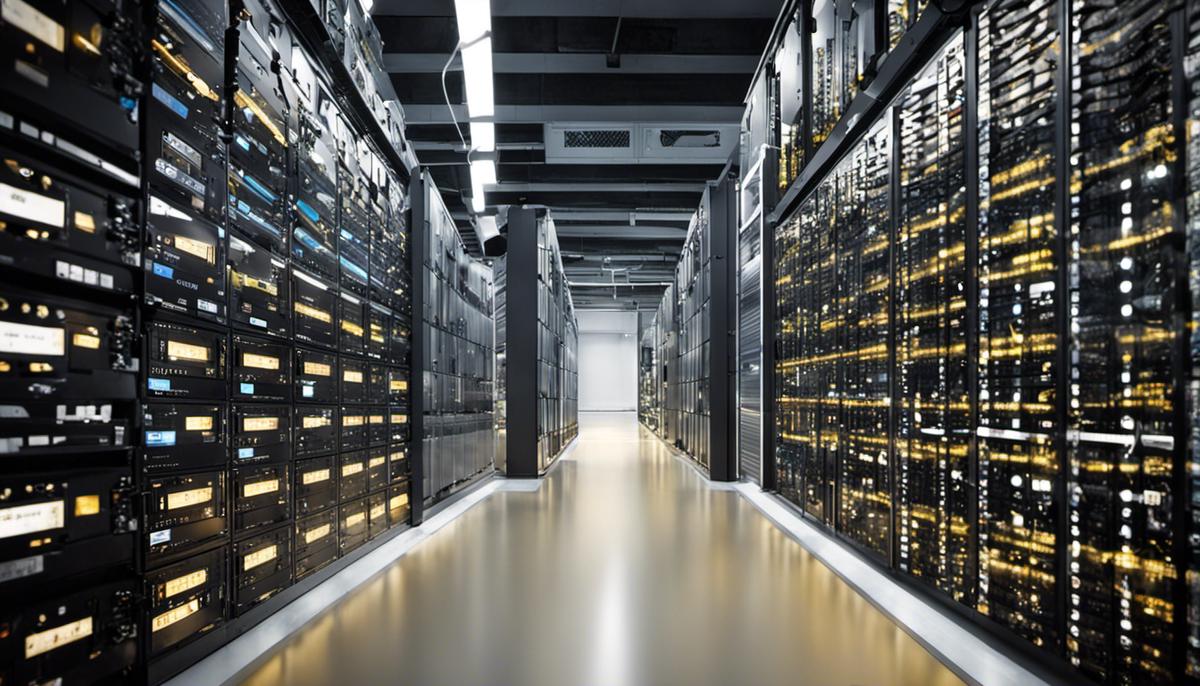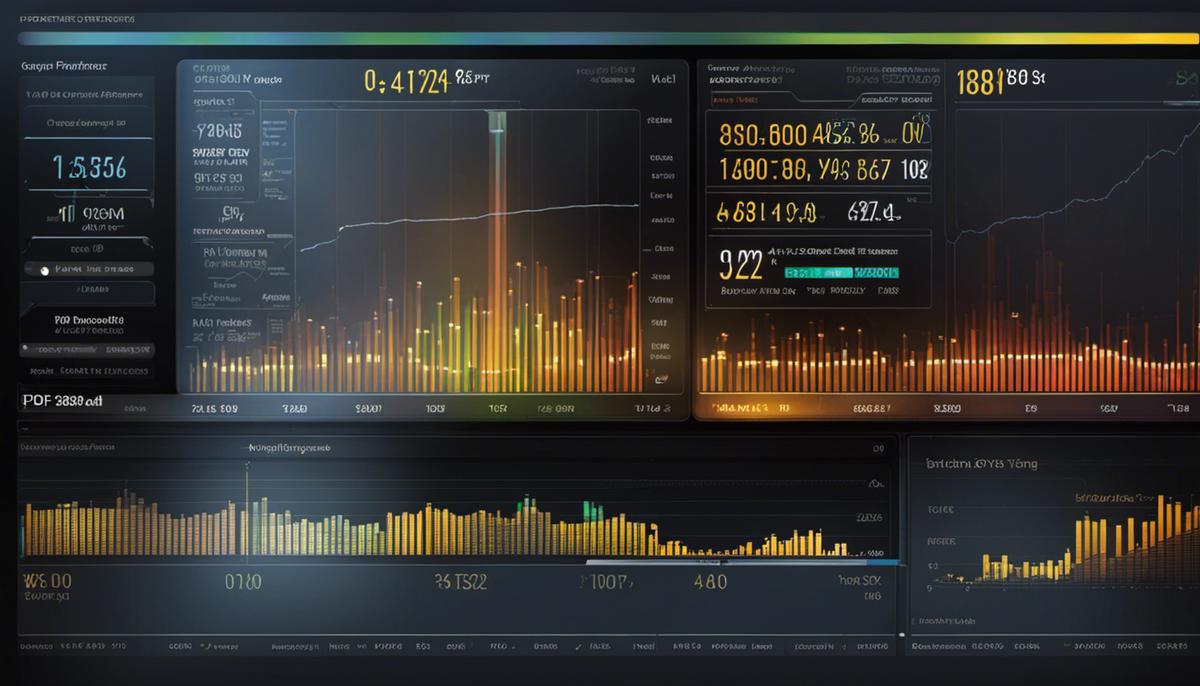In the expanding universe of computer science, vast streams of data are flowing and processed every second. Gaining an in-depth understanding of the systems through which data is stored, transferred, communicated, and measured is a fascinating and vital journey. This journey will take us from the basic units of computer data measurement- Bytes and Bits, to the expansive scale of data storage such as Kilobytes, Megabytes, Gigabytes, Terabytes and beyond. Equipped with these specifics, we traverse into the intriguing world of the binary numbering system; a system that forms an integral part of digital electronics and computer measurements. As we proceed, we delve deeper into the importance of encoding, understanding its role in data representation and manipulation, and explore fundamental encoding systems like ASCII, Unicode, Huffman, among others. The final arc of our journey deals with the metrics that determine the performance of a computer system.
Basics of Computer Science Measurement
Quantifying Computations: The Fundamental Units of Measurement in Computer Science
From transistors to terabytes, the remarkable discipline of computer science operates on a distinctive spectrum of measurement units. These units, forming the backbone of computational platforms worldwide, enable researchers and professionals to quantify and evaluate computational phenomena. This article, with a scientific lens, shall dissect the fundamental units of measurement in computer science.
One of the building blocks of computer measurement units derives its roots from the realm of electricity. The binary digit or ‘bit’ – a contraction of ‘binary term’, quantifies an elementary unit of information in computing. At its core, a bit represents a binary logical state—either 1 or 0, reflecting an electrical signal’s presence or absence, respectively.
In computer science, informational units like the bit are not standalone. The byte, equal to 8 bits, is another quintessential unit of computer measurement. While a bit typically measures the smallest piece of data, the byte, on the other hand, accommodates enough information to encode a single character of text in the computer and could thus be considered as the cornerstone of written communication in the digital world.
Exponential progression from these foundational units has yielded larger units of digital information. Thus, kilobytes (KB), megabytes (MB), gigabytes (GB), terabytes (TB), and petabytes (PB) are where files, databases, and comprehensive system measurements dwell. Each progressing unit is 1024 times larger than the preceding one, illustrating the concept of binary progression integral to computational structures.
Beyond information representation, computer science also hinges extensively on time and space measurements. Algorithm efficiency, for instance, employs Big O notation to signify time complexity. This measurement, expressed as O(n), determines the performance of an algorithm relative to the size of its input, ‘n’, thus allowing computation practitioners to build optimized, scalable software.
Similarly, storage space estimation and utilization, critical for computer memory architecture, follow a suite of its measurement units. From individual registers holding few bytes to colossal databases housing petabytes of data, measurement units facilitate rationalization of memory and storage capacities.
Processor clock speed unveils another unit of significance, ‘Hertz (Hz)’, illuminating the operational prowess of the Central Processing Unit (CPU). The speed, clocked in Hz (one cycle per second), delineates the number of instructions a processor can execute per second, defining the computational power of the system.
Furthermore, computational networking introduces units that expedite digital communication. ‘Baud rate’, for instance, measures the speed of data transmission in terms of bits transferred per second, augmenting our understanding of network efficiency and throughput.
In closing, units of measurement in computer science sculpt the integrity of computational platforms. Every bit, byte, or Hertz quantifies, clarifies, and implicitly refines the transformative power of the informatics landscape. Each measure allows us to understand, in part or whole, this intricate dance of logic and electricity we refer to as computing. These units, taken together, illuminate the realm of computer science, making intangible digital phenomena measurable, meaningful and, ultimately, humanly comprehensible.

Binary System and Computer Measurement
Rooted deeply within the contemporary sphere of computer science, the binary numeral system exerts a profound influence on the discipline’s crucial frameworks, shaping the very syntax and semantics of digital computation. Interpreting the intricate patterns of ones and zeros – binary digits otherwise known as ‘bits’ – doesn’t just build the foundation for advanced calculations within modern computing, but it also fundamentally dictates the measuring systems put in place in that domain.
To understand how the binary system interfaces with measurement in computer science, an exploration of the basics is imperative. Herein lies its most fundamental axiom: its dualistic nature, extant as an elegant oscillation between 0 and 1, serving as the core determinant for electronic-based computer architecture.
The binary numeral system propels the measurement of all forms of calculation, data representation, data transmission, and storage within a computer. With each datum comprising a string of binary instructions, the size of these data strings becomes a fundamental unit of measurement. Every bit added or subtracted alters the nature and size of the data and, with each adjustment, by simple multiplication or division by powers of 2, we navigate from bit to kilobit to megabit and beyond in structured procession.
A primary derivative of this binary data measurement surfaces in the realm of data transfer rates, where communication protocols – such as Ethernet, WiFi, USB, among others – govern the rate at which binary units are transferred per second. This metric, too, can be traced back with clarity to the binary system, highlighting its influence in the measurement of practical performance capabilities.
Binary determination further pervades the arena of algorithm design. The complexity of an algorithm, in both time and space dimensions, is commonly represented within the framework of Binary Search and Binary Space Partitioning, illustrating how these binary components are pivotal to effective computational measurement.
Moreover, the binary system’s role emerges evidently in the quantification of processing speed. Exhibited in floating-point operations per second (FLOPS), instructions per second (IPS) and clock speed, one can directly correlate the frequency of binary switching to a processor’s clock speed expressed in Hz units.
Transcending the realms of physical computation, however, binary concepts shape the most abstract facets of computer theory. Most prominently, the concepts of binary logic and Boolean algebra contribute extensively to the semantics of programming languages and theoretical computer science, reaffirming binary’s pervasive influence across the discipline’s theoretical and practical spheres.
Conclusively, the binary numeral system serves as the lifeblood of modern computation, shaping the foundational syntax of digital languages, data representation, algorithmic complexity, and even processing speed. From the micro-level operations to the vast abstractions of computer science theory, the binary system makes a significant contribution towards measurement and thus stands as a decisive factor in determining the breadth and depth of computer science, forming an integral stitch in the fabric of the digital world.

Encoding Systems and Measurement
Beyond the well-established sphere of binary digits and the numerous derivative units of measurements such as kilobytes, the world of data storage and measurement is still ambitiously expanding.
To continue delving into the matter at hand, one must grasp the pivotal role of various encoding systems in our contemporary digital landscape.
Encoding systems are the calculative language that transform data into a format methodically receivable by various systems. The importance of having various encoding systems exist is exponentially amplified when considering the sheer volume and variety of data that is managed regularly; images, videos, and complex applications all require appropriate encodings to be suitably stored, transferred and interpreted.
American Standard Code for Information Interchange (ASCII) is one such essential encoding system. Thriving through its simplicity, ASCII primarily handles text-based data by associating each character with a binary representation, warranting seamless storage and retrieval processes. However, its restrictions towards English alphabet and basic numerics lead us to delve into other encoding systems, such as Unicode.
Embracing an international linguistic spectrum, Unicode assigns a unique numeric value to virtually every character across global languages, adding an element of universality to the computation world. Its varied schemas, including the widespread UTF-8, which enables encoding differing quantities of bytes, pressingly underscores the role of encoding in facilitating robust and inclusive communication-infrastructure.
While ASCII and Unicode might cater to text data, encoding graphic data required a different approach. Comprising standard rules to convert image data into binary and vice versa, encoding systems for images such as JPEG, PNG and SVG each present their unique blend of advantages in image quality, opacity handling, and compression efficiency. On a more advanced level, video encoding formats such as MPEG4, range from optimizing storage through compression to ensuring consistent quality across various digital platforms.
Lastly, Base64 encoding serves a vital purpose in dealing with binary data, especially during transmission operations. By converting binary data into text-friendly format, Base64 ensures the integrity of the data being transferred, reinforcing the stability of our data-driven internet protocols.
Therefore, encoding systems inherently influence the functionality of information technologies in real, tangible ways. From broadening communication capabilities, optimizing storage, to fortifying data transfer, the effectiveness of these encoding processes encapsulates the vitality of data storage and measurement in the tapestry of increasingly advanced computational environments.
Understanding encoding systems and their role paints a clearer, more nuanced picture of just how meticulous the process of data handling is in our digital world. This understanding also furnishes a deeper respect for the scientific precision and computational craft at work when we deal with the most mundane to the most profound digital experiences in our daily lives. With data growing exponentially by the minute, the complexity and convolutions of these encoding systems further demand our constant academic endeavor.

Computer Performance Metrics
Delving deeper into understanding the dynamics of computer performance, certain additional metrics serve as essentials in elucidating the behavior, efficiency, and overall health of computing systems. These include, but aren’t limited to, Central Processing Unit (CPU) utilization, disk usage, Input/ Output Operations Per Second (IOPS), and network traffic. The indelible footprint of these metrics extends beyond mere technical mechanics—it lays bare the heartbeat of computational systems, providing invaluable insights into system performance, rectifications, optimizations, and scholarly research.
CPU utilization, often measured in percentages, delineates the workload undertaken by the CPU at any given instance. A higher percentage indicates increased utilization, which while potentially signifying efficient use of resources, could also gesture towards CPU strain if sustained for prolonged periods. The ebb and flow of CPU utilization occur on an ongoing basis, creating a rich painting of computational prowess and limitations. From a historical perspective, this potentially elucidates the evolution of CPUs, their design intricacies, and efficiency standards—an invaluable treasure trove for aspiring computer architects.
Plummeting deeper into computing ecosystems, one encounters disk usage—an indicator of the percentage of disk storage currently utilized. While variations exist in the mechanics, the principle remains fairly uniform—more disk usage transpires into less available storage for incoming data, potentially causing a bottleneck for system speeds and efficiency. Consolidated snapshot of disk usage over time acts as a testament to the evolution of data storage, further pointing to solutions aimed at optimizing storage efficiency—such as compaction and defragmentation.
Another central pillar to understand computer performance is Input/ Output Operations Per Second (IOPS). As the name suggests, it quantifies the number of read-write operations a storage device can handle per second. A higher value indicates optimized performance as more operations translate to quicker data retrieval or storage. Simultaneously, it broadens our understanding of data storage dynamics, offers scope for assessing storage devices, and pushes the envelope for optimized data handling methods.
A wander into the realm of networking brings us to network traffic as a vital metric. Predicated as the amount of data moving across a network at a given time, it’s indicative of the throughput and, in consequence, the performance of the network. Overflowing network traffic may lead to packet loss or latency, thereby affecting data transfer efficiency. From a broader panorama, network traffic becomes indicative of the evolution of data transfer protocols, network architectures, and future optimizations.
While these metrics are indeed pivotal, it requires acknowledged that each computing environment is unique and may require additional or specialized parameters. Nevertheless, they establish a foundational entity in understanding computer performance. They not only play a decisive role in the maintenance and optimization of our digital infrastructures, but also offer a fascinating peek into the world of computational science—an arena constantly evolving, challenging, inspiring, and engaging.

The realms of computer science measurement aren’t just bound by the magnitudes of storage units or simple binary operations. It stretches further to encompass sophisticated encoding systems intricately designed, ensuring efficient and accurate data representation. As we manipulate data, we also need to understand the metrics underscoring the performance of a computer system. Parameters like MIPS, Frequency, and FLOPS not only quantify this performance but also reveal a broader context of the discipline. With an understanding of these, we can appreciate the complexity and beauty of computer science – a field that combines the precision of mathematics, the logic of systems, and the inventiveness of design, to create systems that form the bedrock of our digital existence.
